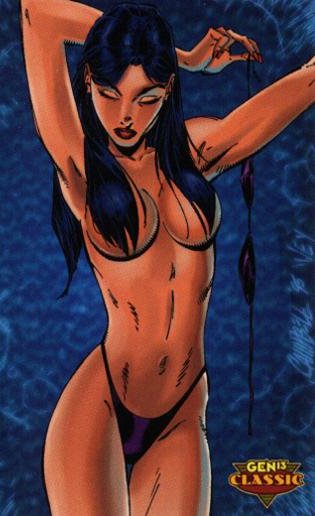The book is based on the legend of the "Lizard People" of Los Angeles. Which is why I posted something about that subject recently.
Houdini Pie
BOOTLEGGING, BARNSTORMING and a Hard-Rock BOONDOOGLE. Los Angeles, 1934: Based on a true chapter of California history, Houdini Pie explores the depths to which a family, and a city, will sink when hard luck comes knocking and there's nothing left to lose. Young Hal Gates is a celebrated pitcher for an upstart rural ball club, and the son of a notorious booze smuggler who vanished at the end of Prohibition. At his lonely mother's urging, and with the desperate backing of the municipal powers-that-be, he teams up with a crackpot geologist to mine for a mythical Hopi treasure trove buried miles beneath the downtown streets. The deeper they tunnel the more Hal learns about loyalty, treachery, hunger and hope, and mostly--in ways he never would have imagined--about love.
Editorial Reviews
Michel's narrative voice [is] a perfect and enlightening use of 30's slang and patois, a condensation of all those movies we've all watched. This is a funny funny book--exhilirating and smart and sophisticated. Michel is a born storyteller, and lord knows, we need more writers like that. A guaranteed pleasure. --Lewis Buzbee
Michel successfully captured the era in his story and was studious enough to insert historical events that would help to mesh the story with the time period. --Bookventures Book Club
Witty, whimsical, wonderfully unpredictable, Paul Michel's wildly entertaining first novel simply shines. Houdini Pie is a fat, succulent slice of story-telling at its best. --A. Manette Ansay, author of Blue Water and Good Things I Wish You
Paul Michel's Houdini Pie is an old fashioned romp filled with colorful characters, an implausibly plausible plot and sheer story-telling verve. Think Treasure of the Sierra Madre grafted onto Chinatown grafted onto The Natural, and the fruits are a rich, and entertaining, Houdini pie. --C.J. Hribal, author of The Company Car and The Clouds in Memphis
Michel's own site gives you another take on the book:
Houdini Pie
The novel picks up where the historical record leaves off. It's a tale of desperation, loyalty and love among a group of mostly fictional figures who populate the more-or-less factual tale. It follows particularly the family of Halley (“Hal”) Gates, a young man named after the comet that filled the sky at the time of his birth in 1910. Hal’s deadbeat father Charlie is a successful bootlegger during the 1920s. He leaves Hal’s home town of Oxnard when Prohibition ends. In Charlie’s absence Hal becomes a reluctant accomplice to the treasure hunt, in fulfillment of a promise to his abandoned and unbalanced mother. He also becomes a successful baseball player on a rag-tag barnstorming team that takes on the more legitimate clubs of the popular Pacific Coast League, and he falls in love with the daughter of a psychic who becomes a focus of the treasure-hunters’ desperation as the plot unfolds. Eventually competing crews are hunting for the gold, and Hal and his family are caught in the middle, along with a host of characters that includes a peripatetic Hopi chief and his mysterious trouble-making daughter, who have their own interest in the myth of the buried treasure.
So it's not really a Native-themed novel, except tangentially. But a few points are worth mentioning.
The Native aspects
As Michel's site notes, there are two Native characters: "a peripatetic Hopi chief and his mysterious trouble-making daughter."
Chief Greenleaf is the more interesting of the two. He shows up mysteriously and does little besides sit and smoke. It's a welcome change from the usual wise elder who spouts greeting-card platitudes.
Of course, the Hopi tribe, a collection of independent villages, never had a single chief. Even now, their Westernized tribal government is led by a chairperson, not a chief.
Also, "Greenleaf" isn't a Hopi name.
If I were Michel, I would've explained that "Chief" was an honorary title or a nickname. I also would've given him a real Hopi name and said "Greenleaf" was a translation or a nickname.
Greenleaf's daughter is more two-dimensional--a sexy Indian temptress who seduces Hal. Given that the Hopi were traditionally conservative and isolationist, this character is highly implausible. It would be like an Amish woman leaving her farming community, moving to New York City, and sleeping her way to the top. It could happen, but it's extremely unlikely.
In short, she's more of a stereotypical Indian princess than anything else. She's one of the book's weaker elements.
Typical Hopi woman from the early 20th century (photo by Edward S. Curtis):

My impression of the chief's daughter:

Greenleaf doesn't offer many details about the "Lizard People" or their underground lair. He does say they were people who could change shape. This is more plausible than talking lizard-men, and it's consistent with Native legends.
I won't say how Houdini Pie ends, but it's a bit unsatisfactory. I guess there was no good way to end the book without a major rewrite of Los Angeles history. And that would've turned the book into science fiction, not a rogue's tale.
Still, it's a good book, if not a great one. Rob's rating: 8.0 of 10. Check it out if you're curious.

No comments:
Post a Comment